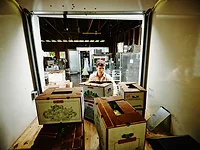Editor's Note
The challenges of hiring
Finding good employees is a constant challenge for companies small and large alike

One of my first tasks as Editor-in-Chief of Food Engineering has been to fill a couple of positions, so I’ve been thinking a lot about the hiring process lately.
Something that I’ve always found interesting—from both sides of the process—has been just how much of a leap of faith hiring someone is. We sift through resumes, conduct interviews, check references, and ultimately hire the candidate or candidates who we think will be the best fit.
But we don’t know they’ll be a good fit, and we won’t know that until they’ve been on board for a while. Which means that we devote a lot of time—and money—to going through the process, then end up having to repeat it again if the employee doesn’t work out. Or, we end up having to go through it again even if they do work out, because they might end up taking another position either inside or outside of the company.
I was thinking about this while driving home from the office recently, because I had a candidate in that day for an in-person interview. And it hit me that while it might be a challenge for me to find the right people, it’s nothing compared to what most of you go through. After all, I’m drawing from a pool of candidates who are applying to be editors and reporters, which means that there is a certain baseline of skills that I can expect them to have. But if we have a sales opening, that’s a different manager’s responsibility. Same with production people, or IT people, or even an editorial opening on one of our parent company’s other publications.
Now, sometimes you will have that certain baseline of skills, especially if you’re hiring for a position that requires certain knowledge or certifications. But in a lot of cases, you are hiring people with the expectation that you will be training them not only in the specifics of their job, but in the generalities of working in a food plant. This is a challenge at any time, but especially now, when everybody is expected to fill positions as economically as possible, while a job market that literally has an opening for every person who is unemployed gives job candidates a lot of leverage. Workers having options isn’t a bad thing, but it does make the hiring process a little trickier.
This makes me think that there’s bound to be some interesting ideas out there about how to handle hiring, especially for positions that have high turnover or are expected to lead to workers advancing relatively quickly.
I’d love to hear those ideas. If you’re so inclined, send me an email—laughmanc@bnpmedia.com—with your best ideas for hiring and retaining workers, and I’ll use them as the basis for a future article in the magazine or maybe even a panel at our Food Automation & Manufacturing Conference. I won’t share anything with your name attached to it unless you give me permission to, but hearing from the people who are doing this every day is a great way for us to find ways to share good ideas with our audience.
Hiring is tricky, and even the most thorough processes can lead to failure. But when we get it right, the benefits are huge, and sharing some of our best ideas might raise our collective batting average a little.
Looking for a reprint of this article?
From high-res PDFs to custom plaques, order your copy today!






